Celebrate Stories of Activism, Sustainability, and Remembrance
November is Native American Heritage Month, established by the United States government to celebrate Indigenous history and culture with relevant programs, ceremonies, and activities. For many First Nations peoples, storytelling is a crucial aspect of the Indigenous experience and worldview. To honor Native American Heritage Month 2024, we have curated a list of recommended novels, poetry, story collections, monographs, films, and television series.
Simmons University acknowledges the Wampanoag, Massachusett, Nipmuc, and Abenaki tribes as the ancestral occupants of the lands on which our institution and surrounding city are built. We honor and respect Indigenous peoples’ stewardship of these territories and natural resources.
Recommended Reading
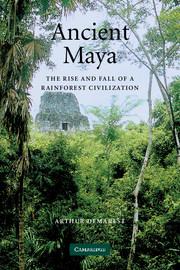
Ancient Maya: The Rise and Fall of a Rainforest Civilization (Cambridge University Press, 2005), by Robert Demarest. This text combines archaeological evidence and theoretical interpretation to glean a nuanced understanding of Mayan civilization. Demarest’s study offers rich insights into the ecological constitution of the Mayans and their Central American descendants.

As Long as the Grass Grows: The Indigenous Fight for Environmental Justice, from Colonization to Standing Rock (Beacon Press, 2019), by Dina Gilio-Whitaker (Colville Confederated Tribes). Gilio-Whitaker, a researcher and activist, examines Indigenous culture through the lens of “Indigenized environmental justice.” Recounting centuries of treaty violations, the protection of sacred sites and resources, and Native women’s instrumental leadership, this book offers new approaches to environmental justice activism and policy. As Gilio-Whitaker argues, modern environmentalists must look to the history of Indigenous resistance for wisdom and inspiration in their common quest to secure a just and sustainable future. The Journal of Political Ecology describes the book as: “an important and accessible work . . . By connecting Native American history with the environmental justice movement in a clear and comprehensive manner, Gilio-Whitaker clarifies the depth of the wrong-doings of the past, while also opening the door to a wide range of opportunities for positive change in the future.”
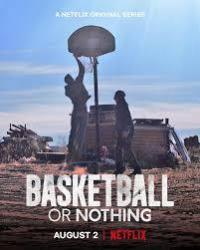
Basketball or Nothing (Main Event Productions and The WorkShop Content Studio, 2019), directed by Matt Howley. This reality television docuseries chronicles the lives of the Chinle High School boys’ basketball team on the Navajo reservation in Arizona. Over six episodes, basketball emerges as a resource for community, medicine, and overcoming hardships, as well as a source of pride for Navajo Nation. The series can be streamed on Netflix.

The Berry Pickers: A Novel (Catapult, 2024), by Amanda Peters (Mi’kmaq). Set in Maine during the 1960s, this novel follows a group of Native workers who pick blueberries for the summer. A young Mi’kmaq girl vanishes without a trace, haunting her older brother Joe for years. Norma, a second protagonist and narrator of the story, is the only child of an older, affluent Maine couple. She senses that she does not belong, and often dreams of another family. Decades later, she unravels the truth about her past. This riveting debut novel explores trauma, perseverance, and love across time. According to People magazine, Peters’ work presents “a stunning debut about love, race, brutality, and the balm of forgiveness,” whereas The Boston Globe writes, “[The Berry Pickers is] an unforgettable exploration of grief, love, and kin.” This book won the Barnes & Noble Discover Prize and the Andrew Carnegie Medal for Excellence in Fiction.
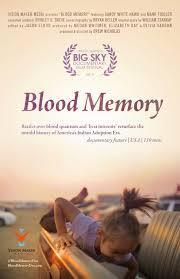
Blood Memory: A Story of Removal and Return (Vision Maker Media, 2019), directed by Drew Nicholas. This documentary film follows the story of Sandy White Hawk (Sicangu Lakota), Founding Director of the First Nations Repatriation Institute. As an adoptee and survivor, she reframes the history of Native adoption. Rather than saving children, the coerced adoption of Indigenous children by White parents had devastating effects on Indigenous families and tribes. Recovering from a 30-year struggle with abuse and trauma, White Hawk begins to restore her stolen past and reclaims her Lakota identity. In the film, she also helps other survivors on their journeys to healing and reunification.
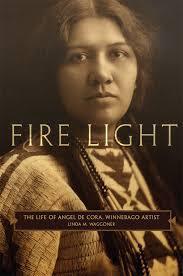
Fire Light: The Life of Angel De Cora, Winnebago Artist (University of Oklahoma Press, 2008/2021), by Linda M. Waggoner. This biography recounts the life and accomplishments of Angel De Cora Dietz (Winnebago, 1869–1919), one of the first Native American visual artists to receive acknowledgment from the mainstream, male-dominated art world. Waggoner depicts De Cora as a complex individual and innovative painter who championed Native art. This book includes over 40 illustrations.
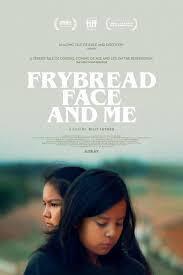
Frybread Face and Me (Indion Entertainment, 2023), directed by Billy Luther (Navajo-Hopi-Laguna Pueblo). In this coming-of-age drama, two adolescent Navajo cousins, one from the city, one from the reservation, bond during a summer together at their grandmother’s Arizona ranch. Their encounter is a catalyst for identity-formation and gives them a sharpened understanding of ancestry. For Variety magazine, “Watching this family interact is a reminder how rare it is to see so many American Indigenous actors in a space, weaving the unique and universal into stories that expand our storehouse of their experience.” Frybread Face and Me is available for streaming on Netflix.

Iwígara: American Indian Ethnobotanical Traditions and Science (Timber Press/Hachette Group, 2020), by Enrique Salmón (Rarámuri). In the Rarámuri tribe, iwígara refers to the interconnectedness of all life forms. The author, an ethnobotanist and Professor of Ethnic Studies at California State University-East Bay, employs iwígara as an analyzing principle with which to approach Native plants and their medicinal, nutritional, and sacred value.

Making a Difference: My Fight for Native Rights and Social Justice, (University of Oklahoma Press, 2019/2021), by Ada Deer (Menominee, 1935–2023). This memoir recounts the life of the late Indigenous activist, 2019 National Native American Hall of Fame Inductee, and first woman to preside over the Bureau of Indian Affairs. In her own words, Deer shares her indefatigable commitment to tribal sovereignty and self-determination. Trained as a social worker, Deer led the struggle for restoring the Menominees’ tribal status and trust lands. She also discusses her contribution to academia and to the Clinton Administration (as Assistant Secretary of the Interior for Indian Affairs). Written with honesty and humor, this autobiography exemplifies how one individual can bring about historic change. According to the Native American and Indigenous Studies Journal, this book offers readers “insight into that complex alchemy that produces impactful historical figures. . . . More succinctly, Ada Deer was fierce.”
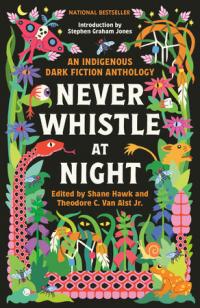
Never Whistle at Night: An Indigenous Dark Fiction Anthology (Penguin Random House, 2023), eds. Shane Hawk (Cheyenne-Arapaho-Hidatsa-Potawatomi) and Theodore C. Van Alst Jr. (Mackinac Bands of Chippewa and Ottawa Indians). This national bestseller contains a collection of mystery, thriller, Gothic, and horror stories. The book’s title takes its name from a longstanding Indigenous superstition that whistling at night can call forth ghosts, ancient warriors, and witches. Accordingly, curses, hauntings, revenants, monstrous creatures, and chilling acts of revenge animate these unsettling stories. Here, the shock of horror effectively celebrates the depths of Indigenous imagination and survival. Kirkus Reviews calls this collection “spine-tingling and suggestive storytelling. . . . Entertaining and thought-provoking, especially in its highlighting of the lurking terrors — from intergenerational trauma to environmental destruction to toxic allyship — confronting Indigenous peoples today.”
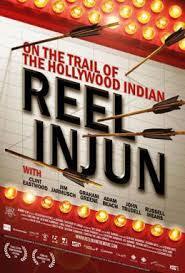
Reel Injun (Rezolution Pictures, 2009), directed by Neil Diamond (Cree), Catherine Bainbridge, and Jeremiah Hayes. This award-winning Canadian documentary film explores harmful stereotypes of Native Americans in Hollywood films — especially Westerns. Feature film footage is spliced with Native actors and key film scholars, who deconstruct the denigrating tropes of the “noble savage,” the “drunken Indian,” and the “groovy wise man.” As Slant magazine reports, this film genre “mixes in the alchemy of real-life activism, education, and the construction of racial identity.”
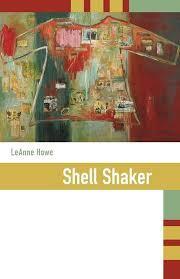
Shell Shaker (Anne Lute Books, 2001), by LeAnn Howe (Choctaw). The award-winning novel revolves around the mysterious murders of Choctaw leader Red Shoes (1700–1747) and (the fictional) Choctaw Chief Redford McAlester. Spanning over two hundred years of history, the novel recounts how Choctaw women solve the murders, with the help of a powerful spirit known as the Shell Shaker. (In Choctaw culture, the shell shaker also refers to a woman who ceremoniously empties turtle shells tied around dancers’ feet during a prayer ritual). In the words of Joy Harjo (Muscogee Creek), the 23rd United States Poet Laureate: “Very few writers can shift a narrative skillfully between centuries and negotiate an enemy language, tribal governments and a slew of spirits while doing so. Very few can translate the soul of such a legacy into words and allow the shape of such a story to weave itself, like stomp dancers around the fire, naturally. LeAnne Howe has done it. Shell Shaker is an elegant, powerful and knock out story. I’m blown away.”
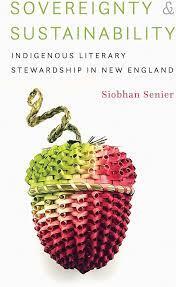
Sovereignty and Sustainability: Indigenous Literary Stewardship in New England (University of Nebraska Press, 2020), by Siobhan Senier. This scholarly work examines how Native American authors in what is now called New England have maintained their own long and complex literary histories. Typically working outside of mainstream archives and libraries, Indigenous peoples of the Northeast began writing in English in a variety of genres (e.g., histories, newsletters, novels, poetry) since the early colonial period. Scholar Siobhan Senier argues that sustainability cannot be divorced from Indigenous sovereignty, and she demonstrates how literary stewardship supports them both. Moreover, this study shows how regional Native literature continues to flourish, veering toward a dynamic future.
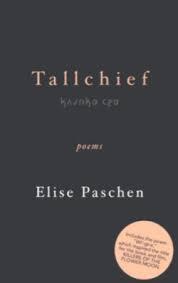
Tallchief (Magic City Books, 2023), by Elise Paschen (Osage). In her new collection of poetry, Dr. Elise Paschen, an award-winning poet and daughter of acclaimed Native American ballerina Maria Tallchief (1925–2013), honors her mother’s artistic legacy. Tallchief includes the poem “Wi’-gi-e,” which inspired the title for New Yorker staff writer David Grann’s 2017 book, Killers of the Flower Moon: The Osage Murders and the Birth of the FBI, and subsequently Martin Scorsese’s 2023 film of the same name. According to Grann, “Elise Paschen is an essential voice for our times. . . . Her powerful words will not only stir you; they will change the way you see the world.”

